 THE RENAISSANCE
SPREADS NORTH AND WEST
THE RENAISSANCE
SPREADS NORTH AND WEST

A
Procession of Characters from Shakespeare's Plays
Unit
Overview
As
the fame of the Italian Renaissance artists grew, scholars and art students
from Western Europe visited Italy to view their work and to study their
techniques. Albrecht Durer and others
applied what they learned and added their own touches to create their own
style. Authors began to write for a
generation of Europeans who had absorbed the ideals of the Renaissance. At the same time, developments in the
printing industry increased the availability and the affordability of
books. Let’s see how it all happened.
Albrecht
Durer: The German Leonardo
The
Renaissance resulted in an interest in classical culture, a belief in man’s
ability to solve problems and a curiosity about everything. These ideals drew scholars and artists from
northern and western Europe to Italian cities.
Albrecht Durer, a German art
student, was one of those who came to study the painting techniques of the
Italian masters. When he returned home,
Durer used these methods to produce a form of art known as engraving. The artist etched
a design with acid on a metal plate.
Then, he used this plate to make prints.
This process enabled Durer to sell thousands of copies of his work. Like Leonardo da Vinci, he had a wide range
of interests. Because he was a writer as
well as an artist, Durer spread the ideas of the Renaissance throughout his
German homeland and earned the nickname the German Leonardo. He was instrumental in enabling the
Renaissance to gain a foothold outside of Italy.
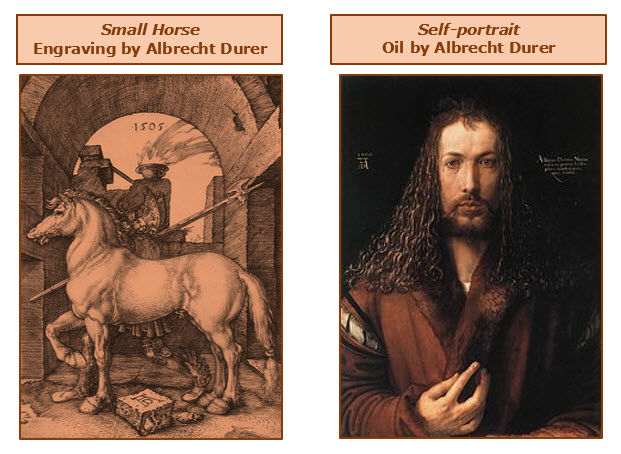
The
Renaissance Took Root in Flanders
During
the Renaissance, northern France, Belgium and the Netherlands made up a region
of Europe known as Flanders. Kings and royal courts in this area
encouraged artists to try new styles and to develop new materials. They also brought examples of Italian
Renaissance art to Western Europe. For
example, Francis I, king of France,
invited Leonardo da Vinci to retire in his kingdom, purchased numerous Italian
paintings and hired Italian architects to build his castle at Fontainebleau. At the same time, the population in Flanders included
several wealthy merchant families that formed the base of a thriving middle
class. In addition to having money to
spend, they appreciated the Renaissance emphasis on individual success and
worldly pleasures. This made them
excellent candidates for patrons of the arts.
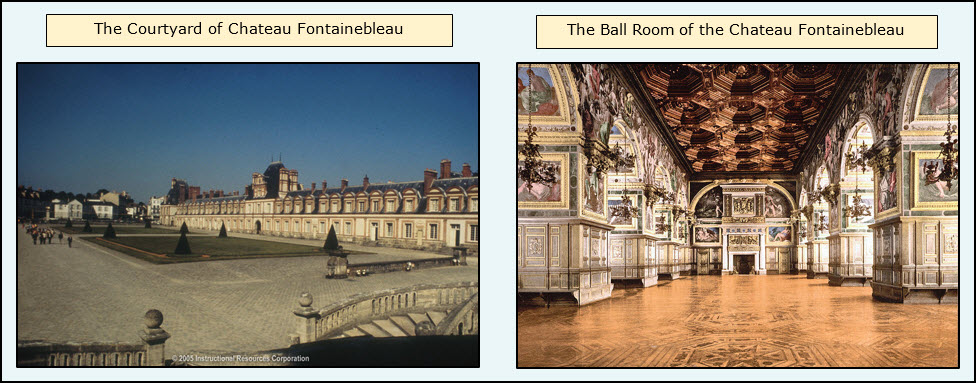
Flanders
produced a number of successful painters.
They experimented with oil-based paints, and this led to a greater
variety of colors. Flemish painters used
these colors to improve perspective and to make their pictures appear more
three-dimensional than those of the Italian masters. They used intense colors for figures or
objects closer to the viewer and lighter, hazy colors for things farther away. Their attention to small details also helped
to make their paintings more realistic.
While the artists of the Italian Renaissance pictured religious or
classical subjects in their works, Flemish artists were inspired by different
themes. Works of art began to depict
everyday activities, such as the celebration of weddings or the gathering of
the harvest.
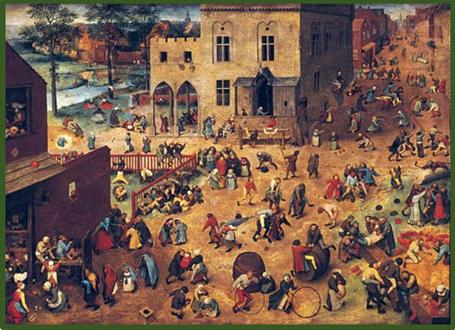
Games
for Children by Flemish Artist Pieter Bruegel
Writers
Appealed to a New Audience
The
Renaissance continued to change the way people thought, and this changed what
they were interested in reading. In
Italy, poetry written by Greek and Roman authors made a comeback. Literature that gave advice to the ambitious
middle class on how to accomplish their goals also became popular. Niccolo
Machiavelli combined his political experience in Florence and his study of
ancient Roman government to write a handbook for leaders. The Prince, published in 1513,
explained how to gain and maintain political power.
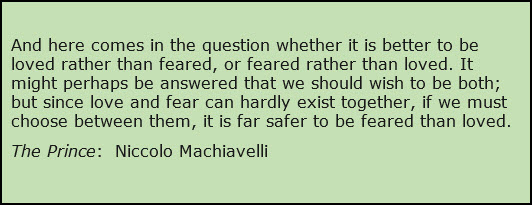
Although
Renaissance scholars continued to write mostly in Latin, the growing middle
class demanded that new works be written in the vernacular or native languages.
Authors soon began to use French, Spanish, Italian, Portuguese and
English to convey their thoughts.
Adventurous audiences wanted novels that entertained them and plays that
made them laugh. William Shakespeare and
Miguel de Cervantes proved to be masters of this craft.
Ø Shakespeare: William Shakespeare, English poet and playwright, was the literary giant of his age. From 1590 to 1613, he wrote thirty-seven plays that are still performed today. His comedies, like Much Ado about Nothing and A Midsummer Night’s Dream, told stories of funny mix-ups and light-hearted romance. Shakespeare explored the range of human emotions through Romeo and Juliet, Hamlet and other tragedies. His history dramas, including Richard the Third and Henry the Fifth, presented the power struggles experienced by English kings. Reflecting the Renaissance theme of humanism, Shakespeare’s productions emphasized the impact of human nature and emotions on major and minor decisions. At the same time, he was a master of English and experimented with using old words in new ways. Shakespeare was credited with adding over 1700 words to the language, including heartsick, courtship and sneak.
Ø Cervantes: The Renaissance
inspired a number of artistic and literary works in Spain. One of the best known is the novel Don
Quixote by Miguel de Cervantes Saavedra. It entertained readers by recounting the
adventures of Don Quixote, an elderly knight, and Sancho Panza, his faithful
companion. Consistent with Renaissance
thinking, the book made fun of medieval chivalry by describing the exploits of
the idealistic but foolish warrior. He
mistook a flock of sheep for an advancing army and fought windmills that he
believed were giants. You can read part
of this story in the graphic below.
Today’s theater audiences continue to enjoy the tales of Don Quixote in
the theatrical production Man of La Mancha.
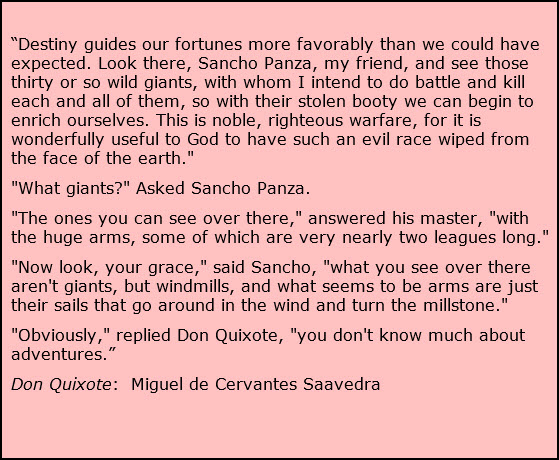
The
Arrival of the Printing Press
The
renewed interest in learning inspired by the Renaissance increased the demand
for affordable books. During the Middle
Ages, reading materials were copied by hand or printed one page at a time from
carved wooden blocks. Both processes
were time consuming and expensive. Johann Gutenberg combined several
technologies already available and his own ideas to make the forerunner of the
modern printing press. The German
printer produced a complete copy of the Bible in 1456. With the addition of moveable type and better
paper-making techniques, European presses turned out 20 million books within
the next fifty years.
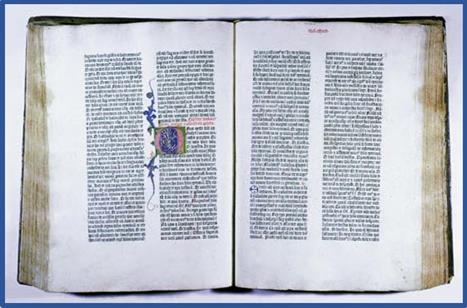
Page
from a Bible printed on the Gutenberg Press
The
impact of the printing press was enormous.
Books were cheaper and more accessible.
This encouraged more people to learn to read. Europeans had access to a wide range of
knowledge, and this led to a broader view of the world. It also changed the way in which they viewed
their religious faith. Christians read
the Bible on their own and began to question the Church’s interpretation of
it. This helped to bring about to a
series of events known as the Protestant Reformation. To learn more about the printing press and the
changes that resulted from its development, watch the video clip below.
What
Happened Next?
The
Renaissance brought a burst of creativity and a renewed interest in learning to
Italy and Western Europe. In the long
term, it established the importance of the individual person and played a key
role in the development of modern democratic ideas. In the short term, it led European Christians
to question the Church’s interpretation of the Bible and brought about the
Protestant Reformation. Before exploring
this topic in the next unit, review the names and terms found in Unit 21; then,
answer Questions 23 through 30.